features
Robot run restaurants are the future, whether you like it or not
06 May 2022
7m
As a society, we’ve always had a rather romantic view of food. Maya Angelou once said cooking for someone was akin to “inviting a person into your life”, while Anthony Bourdain described people and food as “absolutely inseparable”.
But as lovely as these analogies are, can they really be applied to all food today? Does a burger from your favourite chain truly hold any sentimental value? And does a chef churning out 50 wraps genuinely reveal a piece of their soul in every one?
In a world where the fast food industry is projected to be worth $931 billion (£704 billion) by 2027, and people are rapidly vying for convenience over substance, some might argue the need for people in the kitchen is decreasing.
Enter, robot restaurants.

A mock up of Mezli robot restaurant (Credit: Mezli)
Now, we know what you’re thinking… ‘this isn’t a sci-fi movie, or an episode of Futurama‘, but believe it or not, there are already loads of examples of humans relinquishing their responsibilities and putting them in the hands of machines.
For one, McDonald’s has recently been trialling AI deep-fat friars in one of its Chicago stores, whilst Pizza Hut in Singapore has even introduced a meet-and-greet robot waiter. American fast food chain, White Castle, also welcomed the latest model of an AI cooking robot named Flippy into 100 of its locations, after a successful two years of staff working alongside the machine.
Flippy features one big, robotic arm and thermal 3D scanners for eyes, and has the ability to flip burgers on a grill, fry 80 baskets of food in an hour and even clean up its own mess.
“One of the key benefits Flippy has to offer is its ability to learn how to cook hundreds of items consistently and efficiently,” says Mike Bell, CEO of Flippy’s parent company, Miso Robotics.
“In fact, our tests show that Flippy can increase food production speeds in the kitchen by 10 to 20 per cent, allowing staff to focus on preparing, cooking and packing orders more safely and precisely while spending less time attending to the deep fryer.”
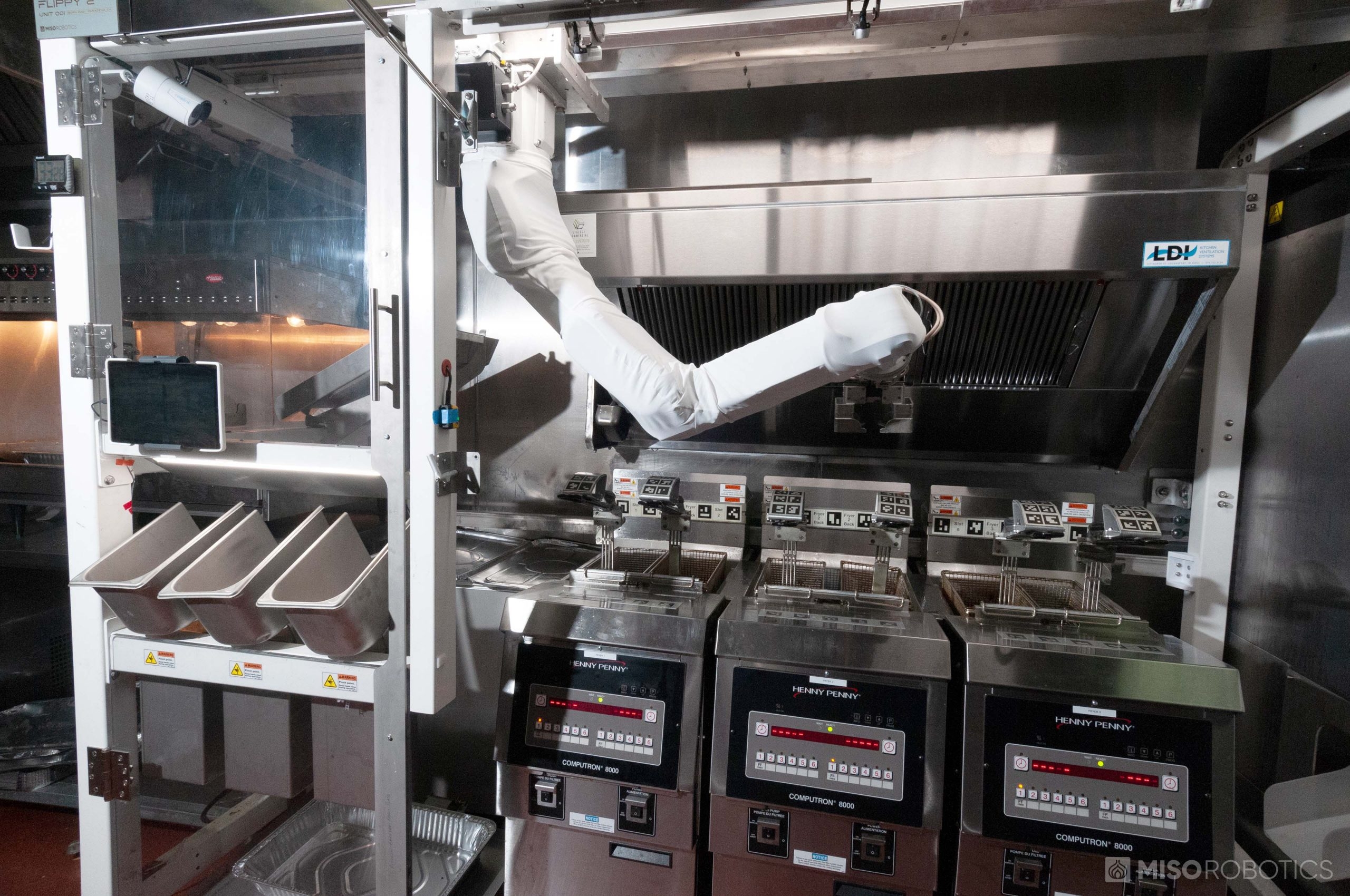
Flippy is now in action at US chain, White Castle (Credit: Flippy)
As neat as this sounds, we haven’t seen widespread robo-waiters or automated kitchens just yet – although, there are signs that change is coming.
The global robotics market is expected to expand with an annual growth rate of 17.24 per cent up until 2025, which means that numerous industries, including the culinary sector, are investing as we speak.
There are several reasons for this anticipated surge in interest. For one, robots offer better hygiene and sanitation levels in a post-pandemic world; then there’s the higher uptake in delivery services; and finally the solution they offer to the current labour shortage (in the UK alone, 75 per cent of bosses have been forced to hike up wages to attract new staff).
Robots might present very real fixes to the problems restaurants and bars are currently facing, but there is understandable apprehension, too.
One major roadblock cited by critics is the fear that the machines could end up replacing a human workforce. In fact, one restaurant consulting firm warns that robots could eventually take over as many as 80 per cent of human positions.
The solution, according to robotics experts, is to find a way to co-exist.
“The human element will always be important to deliver a truly meaningful experience,” Miso Robotics’ Bell assures Twisted. “Intelligent automation, like Flippy, is there to supplement and support existing systems and staff – not take jobs away.”
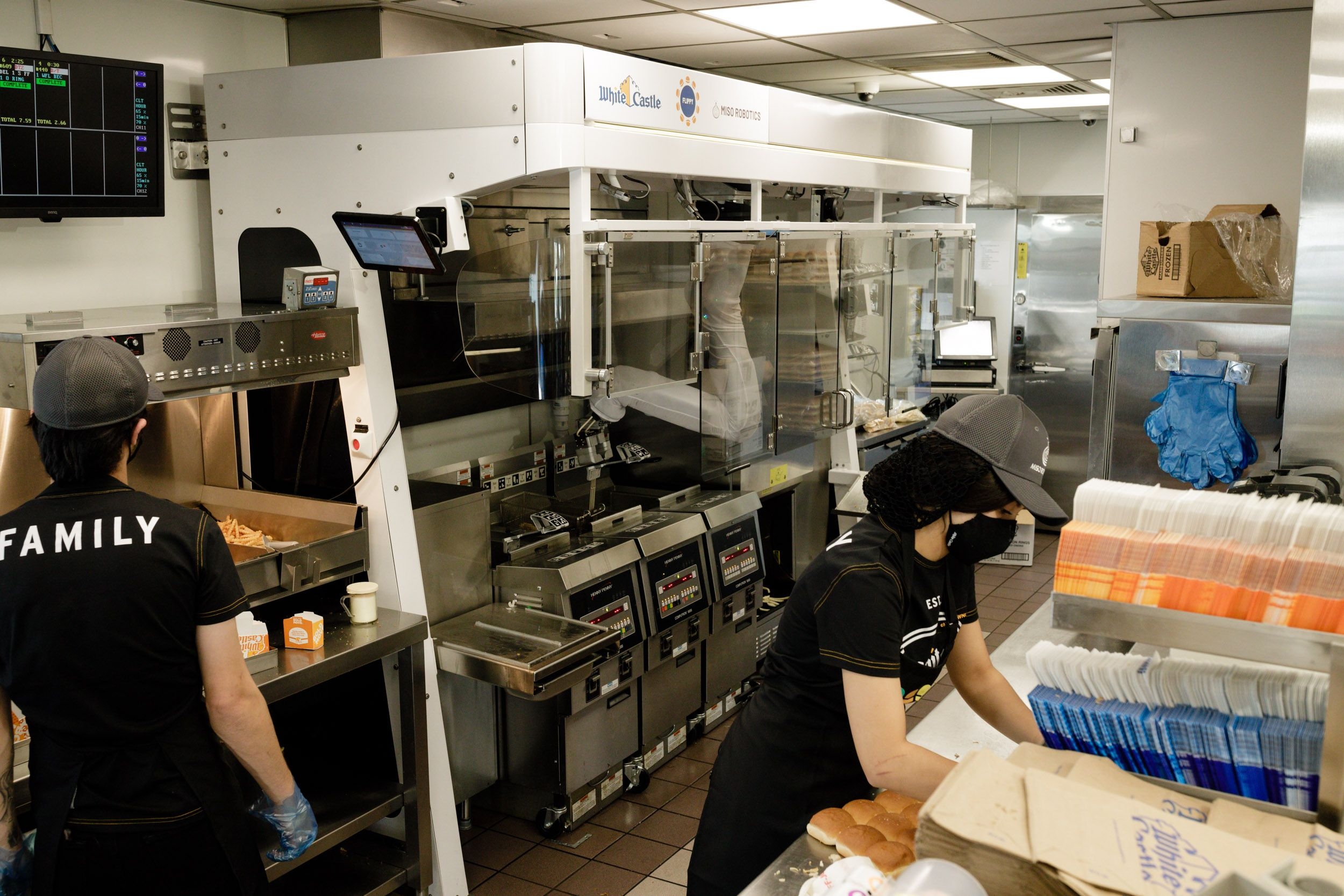
Flippy at work in White Castle alongside human staff (Credit: Flippy)
Inventors of robotic barman, Makr Shakr, join Bell in his vision, and they’re also confident that robots aren’t about to come along and doom a generation of hospitality workers – even if they do bring with them a change of tact.
The company’s CEO, Emanuele Rosetti, tells us: “I believe there are two keywords around which we can build up a constructive discussion: transition and redistribution.
“Transition [is] to be able to manage technological upheavals without being overwhelmed…to help those who have lost their job to find another one and to educate new recruits to the professions of tomorrow.
“[Then there’s] redistribution, because it is essential to understand who the system’s benefits will go to [and] who will be unemployed.
“An idea would be to make robots or new artificial intelligences pay taxes. This could mean taxing capital and transferring income to those who may have lost their jobs – it’s a proposal that has been discussed widely in the last few years.”
Currently residing in robot-bars in Amsterdam and Reykjavik, Rosetti’s robot, Toni, has mechanical arms which can knock up a drink of your choice in seconds, following recipes from international bartenders and also making customised beverages in a completely contact-free manner.
“At a time in which restaurants and clubs still struggle to offer solutions that can guarantee full safety for their customers, robotic bartending [is] a game changer,” he adds.
“As American historian Lewis Mumford wrote ‘The greatest benefit of mechanisation is not the elimination of work’, but the replacement of a less pleasant job with more creative and with greater added value.”

Toni the robot-bar from Makr Shakr (Credit: Makr Shakr/ Instagram)
The pandemic may well have triggered interest in robotics (indeed, Flippy and Makr Shakr both report a surge in sales) but Brand Clock’s food trends expert, Eddie Stableford, warns that whilst eateries may be enticed by the economic and practical benefits of AI, in some cases, consumers may be more hesitant.
“The problem with robots is that they take us to a place which isn’t where a lot of consumers think about food,” he explains.
“Food is elemental. It isn’t just about fulfilment. If you ask ten consumers the best meal that they’ve had and why, they’ll talk about the food, but sometimes, if it’s not their second priority, number one thing they’ll mention will be the service and experience.
“Nowadays, I think we value personal relationships more than ever.
“We’ve lived through limitations on how much we can interact with other humans, and I think that makes the whole opportunity to do so even more valuable today”.
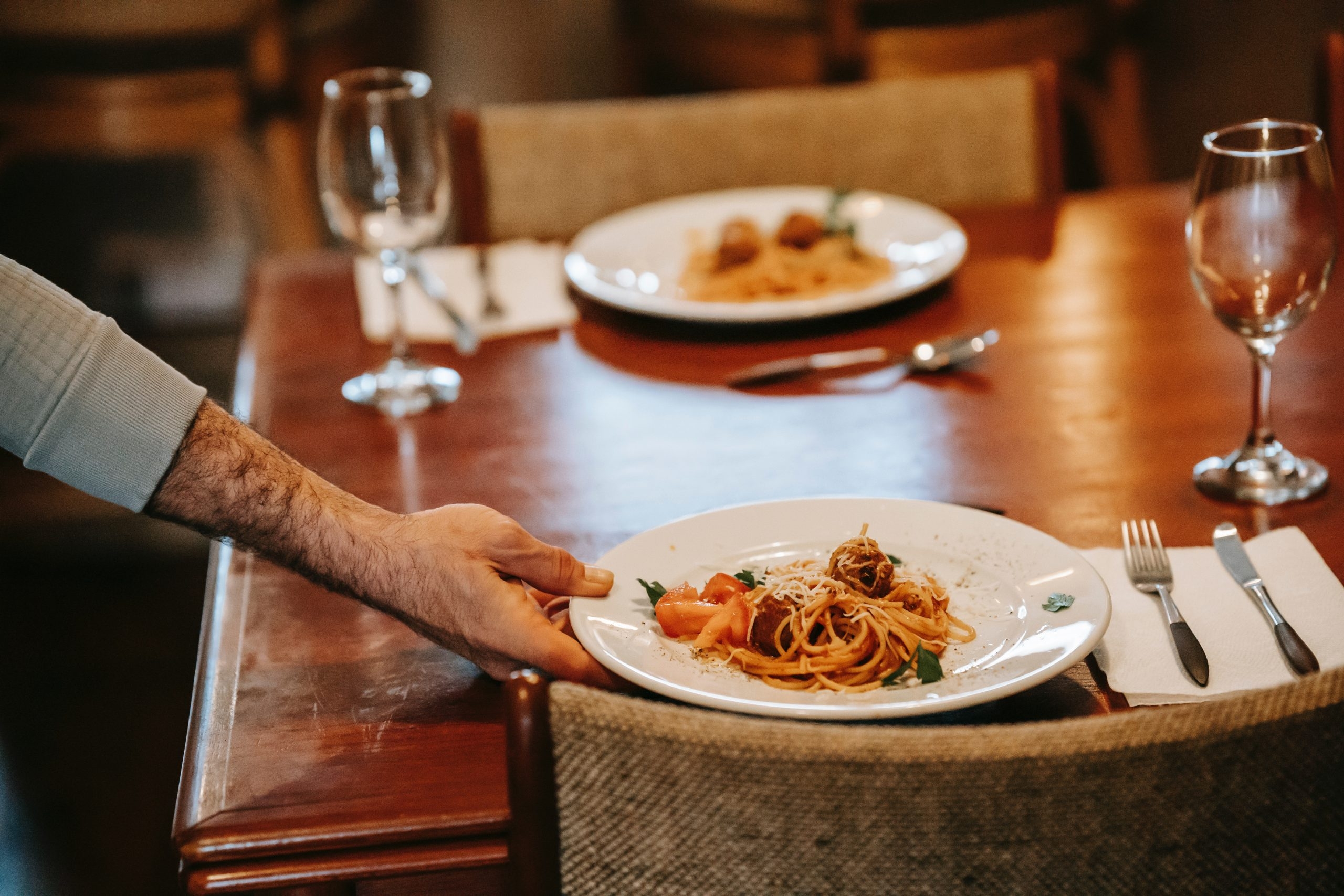
Are we ready to give up the human touch? (Credit: Pexels)
Stableford has a point, and this is certainly likely to limit the success of a robot fine dining restaurant, for example, but innovators believe there’s an important distinction to be made between fast food and a sit-down dining experience.
“Nowadays, people are going on their phones and ordering lunch,” says Alex Kolchinski, CEO of San Francisco restaurant concept, Mezli – a robot-eatery, which can run for 48 hours or make 300 meals before needing any human intervention.
“They’re walking in, not even speaking to a human and they’re taking their lunch back to their desk or home.
“This obviously isn’t what you want to do for every meal, [however], in our world, it’s not like everyone has time to sit down for three meals a day.”
Alex set up Mezli alongside Stanford University grads, Alex Gruebele and Max Perham, in response to a lack of fast food chains that offered healthy, cheap meals, that could be grabbed on the go.
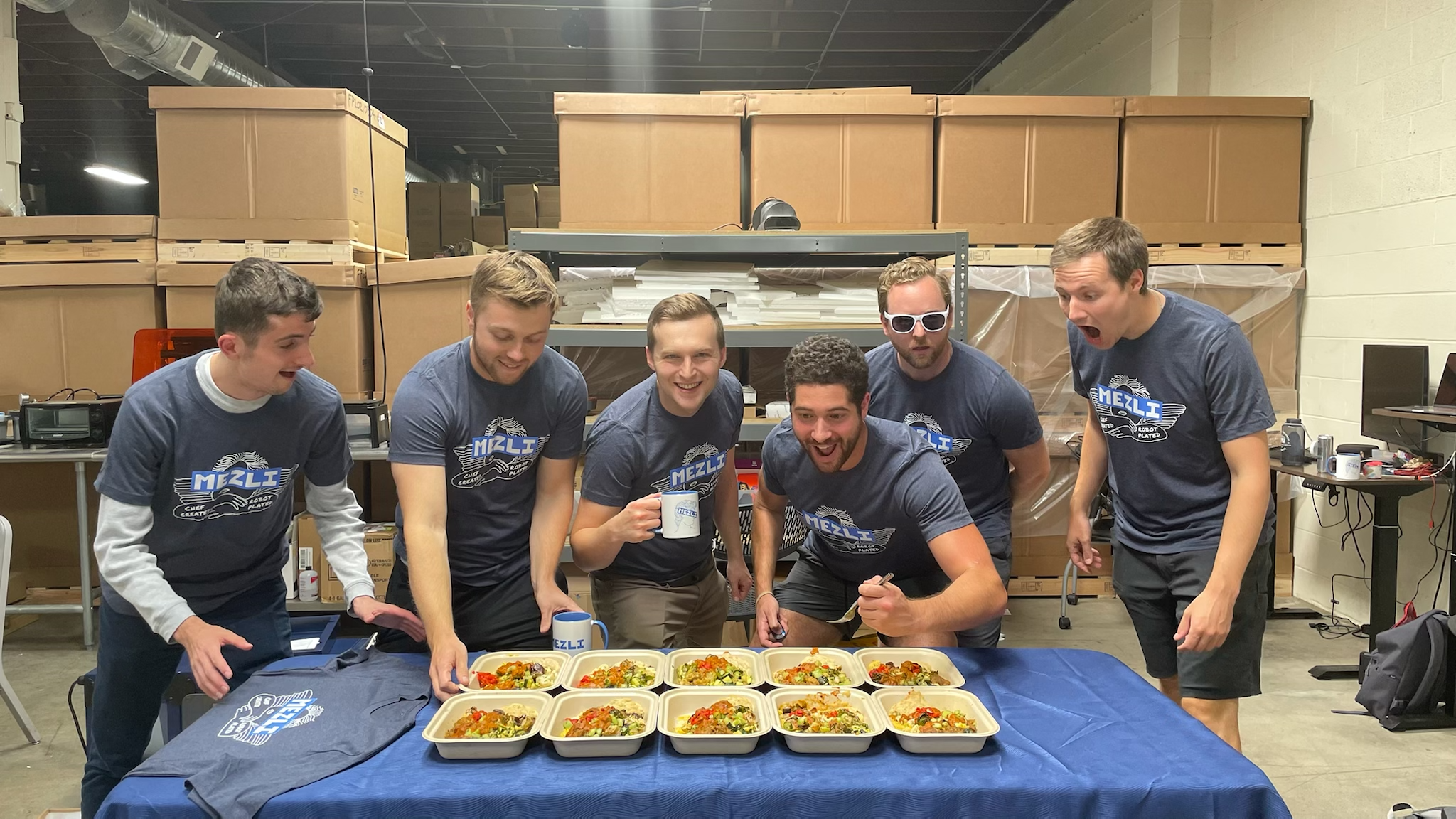
Alex, centre, is part of the Mezli engineering team (Credit: Mezli)
After meticulously road-testing their machinery against man-made plates of food, the Mezli team is set to flex their bot’s skills this summer by opening their very first fully robot-run restaurant, making grain bowls conceptualised by Michelin trained chef, Eric Minnich.
Then, they’re hoping to mass produce the same technology, selling it to chefs and restauranteurs to “enable creativity at scale”.
“Ultimately, want to put these in all kinds of places where people are so that everyone feels like they can easily access the one that’s just down the block,” he says.
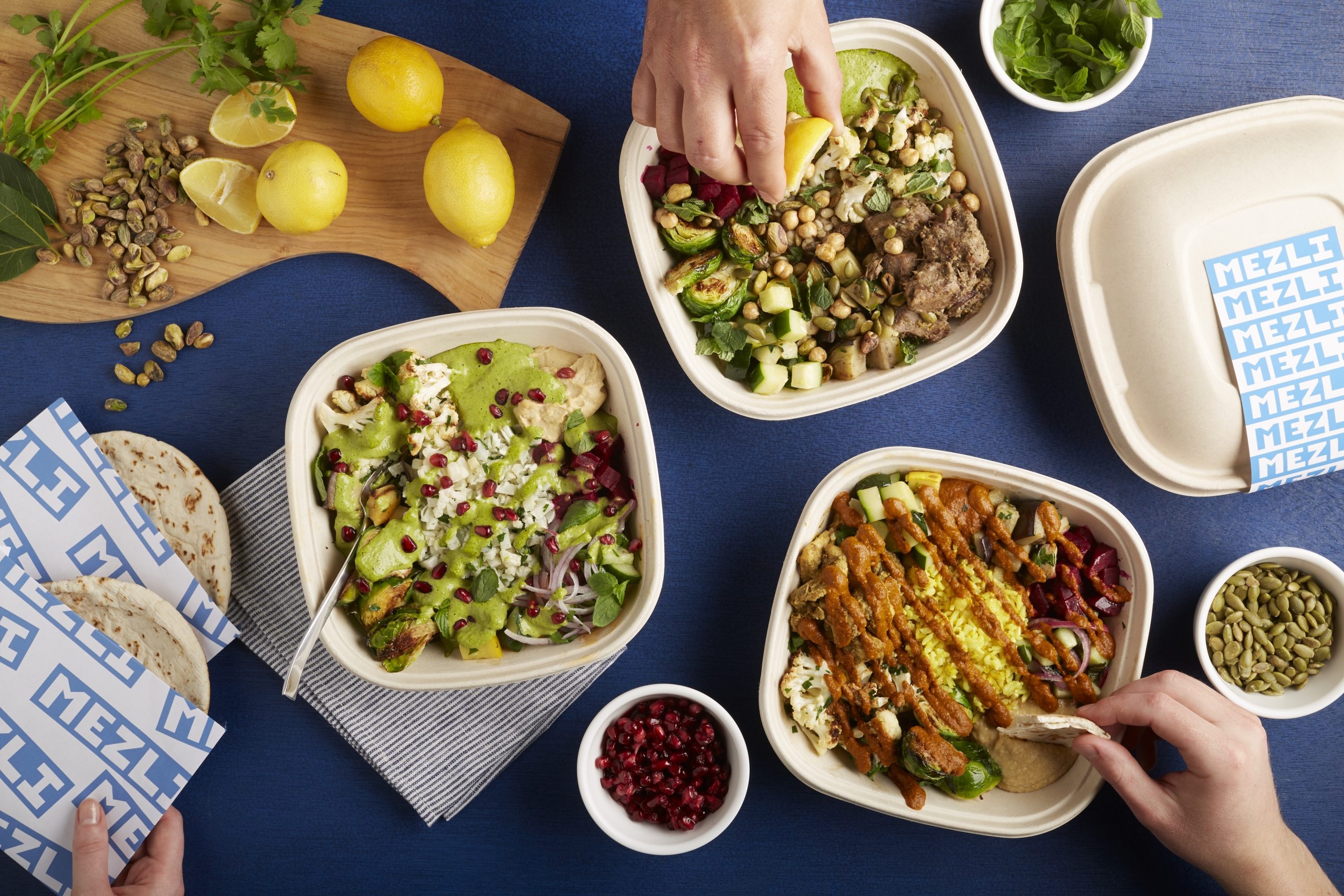
Mezli’s grain bowls need no humans to be knocked together (Credit: Mezli)
London’s Moley Robotics have similar ambitions, but they’re pitting their robot kitchen at a domestic market as well as commercial buyers.
They’re convinced that their ceiling-mounted kitchen device, pre-loaded with 5000 recipes, will one day be a tool that anybody and everybody will have installed into their homes.
Discussing the appeal of The Kitchen – which took six years to finesse – CEO, Mark Oleynik tells Twisted: “In our opinion, the main value of the customer gets is a machine that cooks a dish exactly like a professional.
“In the same way people like to go on gastronomic food trips or visit specific restaurants, they can have similar experiences from their kitchen.”

Moley Robotics’ AI machine, The Kitchen, in action (Credit: Instagram/ Moley Robotics)
The main obstacle for all these brands is making their products more affordable, so they can reach a mass market. Of the products already on sale, Flippy currently costs £30,000 upfront or £3,000 a month; meanwhile, Makr Shakr’s Toni costs $115,000 (£86,400).
But in the same way smart-phones, electric cars and computers have become more affordable over the years, the owners of all of these robots are confident that their products will become more accessible once they’ve pulled in the early adopters, and shown how essential they are to a modern consumer.
It’s hard to put a time-scale on when robots will take over the culinary world, or indeed to confirm what such a world would look like. However, if you think about it, they already play a pretty large part in the food that we eat, today.
“You’ll probably struggle to find coffee which isn’t produced by a machine these days,” says Moley’s Oleynik. “Any pasta which is bought from the supermarket is made by the machine and any kind of meat which is quartered is likely made by a machine.
“Even when you’re going to a restaurant, machines have played their part. We just don’t notice it.”
Is it really so scary to imagine them making our lunch, too?



.jpg_dU0O4c?tr=w-2560,f-webp,q-70)